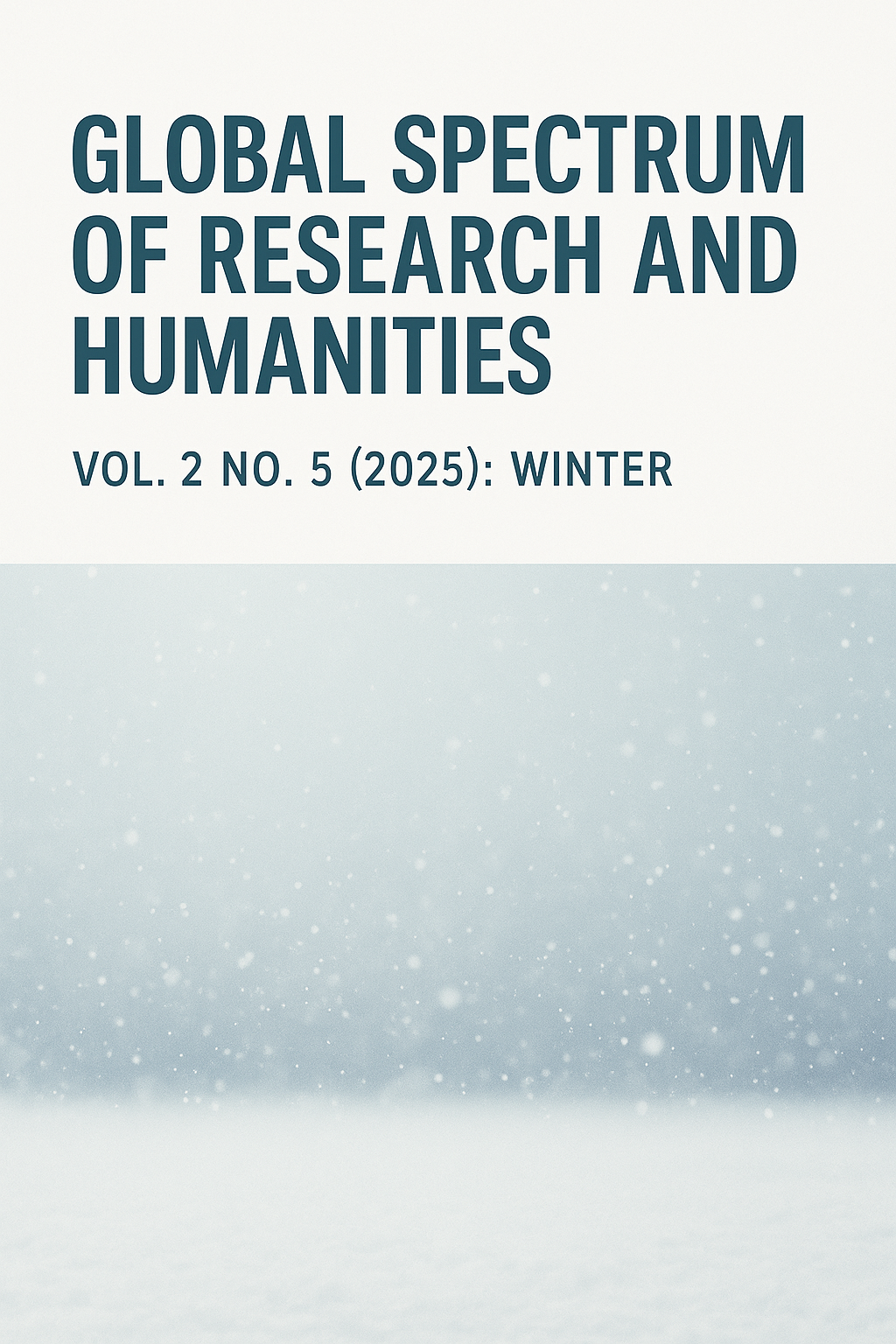Evolution, Genre Characteristics, and Thematic Diversity of the 19th-Century English Novella
DOI:
https://doi.org/10.69760/gsrh.0250205011Keywords:
English novella, 19th century, Romanticism, Realism, Naturalism, genderAbstract
The 19th-century English novella occupies a unique position within literary history, bridging the gap between the short story and the novel. This study examines the development of the English novella in the context of Romanticism, Realism, and Naturalism, highlighting the influence of European literary traditions and socio-cultural changes in England. The novella’s structure, psychological depth, and symbolic dimensions are analyzed, emphasizing its capacity to portray social realities, moral dilemmas, and individual consciousness. Special attention is given to the depiction of women and gender issues, revealing how novellas engaged with social constraints and intellectual pursuits. Overall, the research demonstrates that the 19th-century English novella functioned as both a compact narrative form and a medium for social and psychological insight, establishing a foundation for later modernist literature.
References
Hanning, R. W. (2021). Boccaccio, Chaucer, and Stories for an Uncertain World: Agency in the Decameron and the Canterbury Tales. Oxford University Press.
Russell, A. P. (2022). Literature, Pandemic, and the Insufficiency of Survival: Boccaccio’s Decameron and Emily St. John Mandel’s Station Eleven. Interdisciplinary Journal of Leadership Studies, 1(1), 3.
Dickens, C. (1860). The Haunted Man and the Ghost’s Bargain. Chapman & Hall.
Gaskell, E. (1864). Cousin Phillis. Smith, Elder & Co.
Pospíšil, I. (1999). Paradoxes of genre evolution: the 19th-century Russian novel.
Henny-Krahmer, U. (2023). Genre Analysis and Corpus Design: Nineteenth Century Spanish American Novels (1830–1910). Bayerische Julius-Maximilians-Universitaet Wuerzburg (Germany).
O’ktamovna, Y. H. (2025). THE MAIN GENRES OF CHILDREN'S LITERATURE IN THE HISTORICAL AND LITERARY PROCESS OF ENGLAND IN THE 19TH AND EARLY 20TH CENTURIES. SHOKH LIBRARY.
Rajan, T., & Wright, J. M. (Eds.). (1998). Romanticism, history, and the possibilities of genre: re-forming literature 1789-1837. Cambridge University Press.
Hardy, T. (1888). The Withered Arm and Other Stories. Macmillan.
James, H. (1898). The Turn of the Screw. Macmillan.
Sadigzadeh, Z. Interplay of Linguistic Relativism and Universalism. Akademik Tarih ve Düşünce Dergisi, 11(3), 1750-1758.
Sadiqzade, Z. (2024). The Use of the Detective Genre in 19th-Century English Prose. Acta Globalis Humanitatis Et Linguarum, 1(1), 56-66. https://doi.org/10.69760/aghel.01024065
Eliot, G. (1871–1872). Middlemarch. William Blackwood and Sons.
Shelley, M. (1818). Frankenstein; or, The Modern Prometheus. Lackington, Hughes, Harding, Mavor & Jones.
Cheng, L. (2022). Human emotions projected onto androids: a manifestation of internal crisis—human–android interactions in “The Sand-Man” by ETA Hoffmann as example. Neohelicon, 49(2), 451-463.
Bessard-Banquy, O. (2016). La maison Ollendorff Splendeurs et misères d'une grande maison littéraire Au tournant des XIXe et XXe siècles. Revue française d'histoire du livre.
Golden, A. (2020). Annotating modernism: Marginalia and pedagogy from Virginia Woolf to the confessional poets. Routledge.
Downloads
Published
Issue
Section
License
Copyright (c) 2025 Global Spectrum of Research and Humanities

This work is licensed under a Creative Commons Attribution-NonCommercial-NoDerivatives 4.0 International License.




